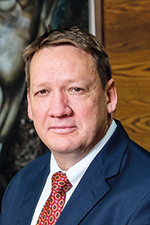

The clean energy transition of the Mining, Minerals and Metals (MMM) industries will require the quadrupling of mineral requirements for clean energy technologies by 2040, according to a report by the IEA. Speaking at the recent African Mining Indaba, president of MMM at Schneider Electric, Rob Moffitt emphasised that the supply of critical minerals and metals could fall short as soon as 2025. “In order to gear up for MMM’s clean energy transition, we will require a lot more exploration, innovation and collaboration to meet our sustainability goals. That said, minerals and metals such as copper and lithium are vital components in this journey, and without commitment and investment we will not have enough supply to meet demand,” he said.
Moffitt’s statement echoed the sentiment at the Mining Indaba, where concerns were raised regarding the shortage of critical minerals and metals that are required across a spectrum of clean energy resources such as solar panels, wind turbines and battery storage.
According to the IEA, electrical vehicles and battery storage will account for about half of the mineral demand growth from clean energy technologies over the next two decades, spurred on by surging demand for battery materials. By weight, mineral demand in 2040 is dominated by graphite, copper and nickel. Lithium sees the fastest growth rate, with demand growing by over 40 times in the sustainable development scenario. The shift towards lower cobalt chemistries for batteries helps to limit growth in cobalt, displaced by growth in nickel.
“Africa has an important role to play in meeting demand for critical minerals and metals. For example, the continent has vast lithium resources, which is why leaders must come together to establish a lithium hub that will meet escalating demand,” added Moffitt.
According to the British Geological Survey Report, Zimbabwe, the DRC, Ghana, Namibia and Mali have a combined 4,38 million tons in lithium resources.
Schneider Electric has already mobilised to support the MMM industry in its efforts to meet the demand for critical minerals and metals in the transition to a cleaner energy posture. The company’s EcoStruxure for Mining, Minerals and Metals architecture builds a sustainable, efficient and responsible MMM business through digitally integrated power and process.
Together with AVEVA, which is wholly owned by Schneider Electric, EcoStruxure for Mining, Minerals and Metals creates integrated digital environments and redefines the energy journey to optimise production and value chain performance throughout the entire project lifecycle.
This also falls in line with the IDC’s 2022 Energy Transition Survey, which notes that 42% of metals and mining companies report that a “lack of good data on energy usage related to CO2 is a significant barrier to meeting their CO2 reduction goals”.
Apart from supply, mines also have to meet their individual decarbonisation targets. Moffit explained that the MMM industries can benefit significantly from the deployment of microgrids for example, which allow for self-contained, on-site energy generation from greener sources that can improve sustainability, reliability and resilience. Using on-site energy more efficiently improves the productivity, reliability and safety of mining processes. Critical is the integration of energy management, automation and software − the sustainability triad − to boost efficiency of industrial infrastructure in an open digital model assisting organisations to achieve their goals timeously.
“Ultimately, through our focus on power and process, we work with our customers to drive improvements in efficiency, sustainability, resilience and agility of their operations,” he concluded.
| Tel: | +27 11 254 6400 |
| Email: | [email protected] |
| www: | www.se.com/za/en/ |
| Articles: | More information and articles about Schneider Electric South Africa |

© Technews Publishing (Pty) Ltd | All Rights Reserved